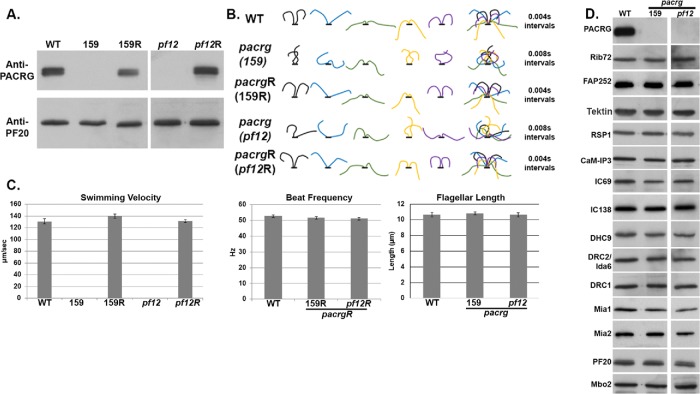FIGURE 2:
Motility defects of pacrg mutants are due to abnormal flagellar waveforms. (A) Anti-PACRG Western blots indicating PACRG protein is present in cells transformed with the WT PACRG gene. (B) Waveform tracings of flagella from WT, pacrg mutants (159 and pf12), and pacrg mutants rescued with the WT PACRG gene (159R and pf12R). (C) Histograms of swimming velocity, beat frequency, and flagellar length from WT, pacrg mutants, and pacrg mutants rescued with the WT PACRG gene. Beat frequencies were unable to be measured from pacrg mutants due to their abnormal waveform. (D) Western blots of axonemes from WT and pacrg mutants. Blots were probed with antibodies against proteins present on various known structures in the axonemes.

